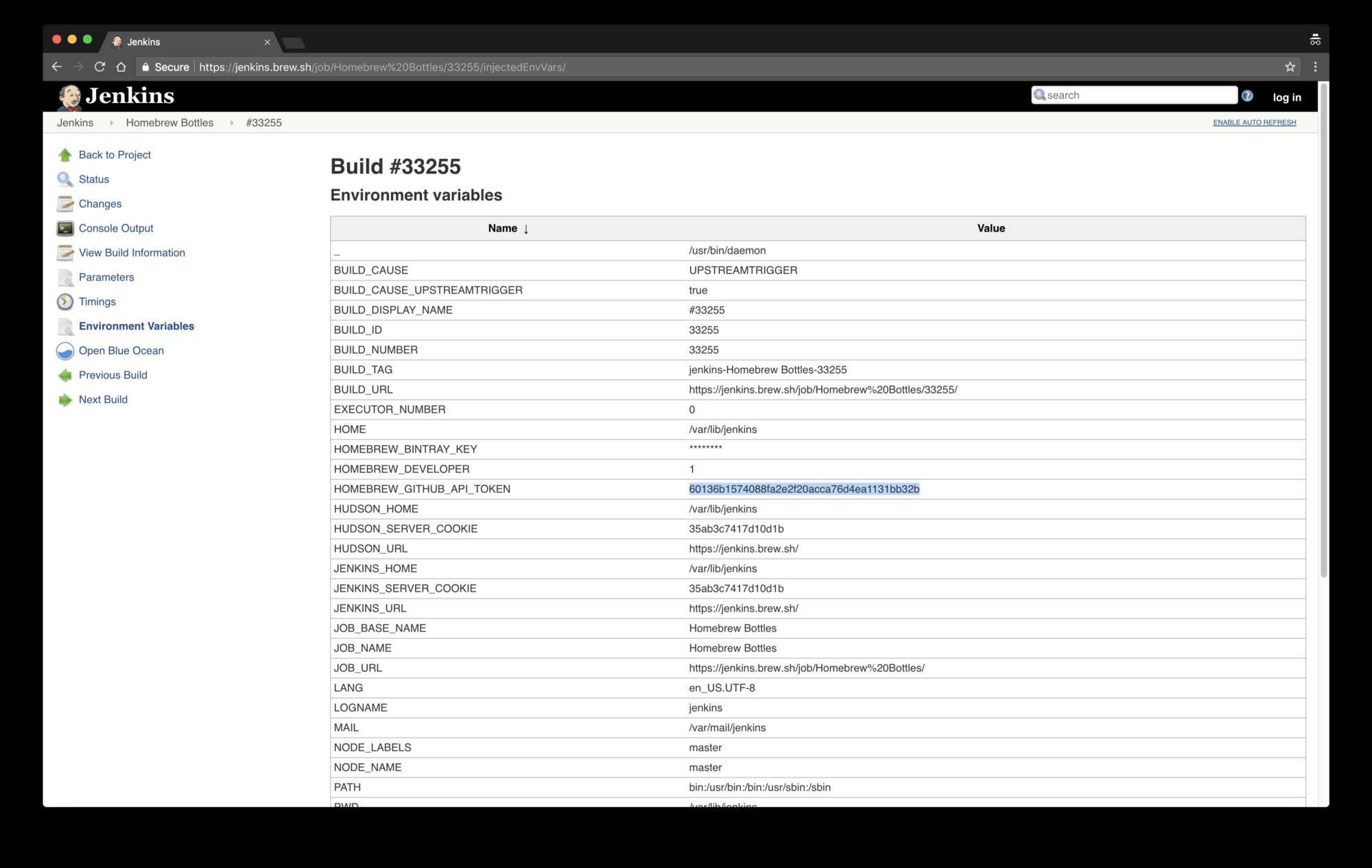

or, a way to copy it to your clipboard automatically.įor 1, just use: cat ~/files/myPatFile.txt.a way to display it in your console so you can see it again.Now you're going to need at the very least: If you don't save it somewhere there is no way to ever see it again and you'll be forced to create a new PAT. Once you have your PAT, you're going to need to save it in a file locally so you can use it again. When you create the PAT make sure you choose the following options so it has the ability to allow you to manage your repositories. That will give you the PAT value that you will place in your URL. You need to generate a PAT following the steps at: Creating a personal access token
#GITHUB TOKEN PASSWORD#
Now submit your PAT as your password and it will work. You'll be prompted for a username and passwordģ. Repo.git will be your exact repository nameĪlso you will be able to use it this way too:ġ.

Here's what the final URL will look like: git push PAT (personal access token) value - The entire long value between the // and the sign in the URL is your PAT.
#GITHUB TOKEN HOW TO#
But you need to know how to create a PAT (personal access token) which you are going to have to keep in a file on your computer. I was terribly confused.įinally, I got to the URL below which will work. I'm on Ubuntu 20.04 (Focal Fossa) and I kept getting the message that soon I wouldn't be able to log in from console. Note: the last line pre-populates github's RSA key, which avoids the need for manually accepting at the time of a connection. echo " ssh-rsa AAAAB3NzaC1yc2EAAAABIwAAAQEAq2A7hRGmdnm9tUDbO9IDSwBK6TbQa+PXYPCPy6rbTrTtw7PHkccKrpp0yVhp5HdEIcKr6pLlVDBfOLX9QUs圜OV0wzfjIJNlGEYsdlLJizHhbn2mUjvSAHQqZETYP81eFzLQNnPHt4EVVUh7VfDESU84KezmD5QlWpXLmvU31/yMf+Se8xhHTvKSCZIFImWwoG6mbUoWf9nzpIoaSjB+weqqUUmpaaasXVal72J+UX2B+2RPW3RcT0eOzQgqlJ元RKrTJvdsjE3JEAvGq3lGHSZXy28G3skua2SmVi/w4圜E6gbODqnTWlg7+wC604ydGXA8VJiS5ap43JXiUFFAaQ=" > ~/.ssh/known_hosts echo -e "Host \n IdentityFile /path/to/my_deploy_key" > ~/.ssh/config openssl aes-256-cbc -k "$password" -d -a -in my_key.enc -out my_deploy_key Then use the $password file to decrypt your deploy key at integration-time, by adding to your yaml file: before_script: $ travis encrypt -add password=$password -r my-github-user/my-repo $ cat my_key | openssl aes-256-cbc -k "$password" -a > my_key.enc Here's a sketch of how the technique works.įirst generate an RSA deploy key (via ssh-keygen) called my_key and add it as a deploy key in your github repo settings. If you want to tighten down access (with a bit more work!) you can use GitHub deployment keys combined with Travis encrypted yaml fields. Note that sigmavirus24's response requires you to give Travis a token with fairly wide permissions - since GitHub only offers tokens with wide scopes like "write all my public repos" or "write all my private repos". To avoid handing over "the keys to the castle". Password: put me on the right track with the documentation link.) I read in lots of places that I needed to delete and recreate the remote, but in fact my normal push command worked exactly the same as the clone above, and the remote did not change: $ git push I was actually forced to enable two-factor authentication by company policy while I was working remotely and still had local changes, so in fact it was not clone I needed, but push. After about an hour of trawling documentation and Stack Overflow, I finally found the answer: $ git clone

Laughably, the article tells you how to create it, but gives absolutely no clue what to do with it. git/config file in plain text, which is a security risk.įirst, you need to create a personal access token (PAT). If you enter your token into the clone URL when cloning or adding a remote, Git writes it to your. Warning: Tokens have read/write access and should be treated like passwords. Git remote set-url origin will fix your project to use a remote with credentials built in. Unfortunately, however, you have no control over how Travis clones your repository, so you have to edit the remote like so. That will add your credentials to the remote created when cloning the repository. (Taking a look, however, indicates that it is not.) What you would normally do is the following: git clone -branch=gh-pages gh-pages That aside, that doesn't authorize your computer to clone the repository if in fact it is private. You should be using the following curl -H 'Authorization: token '.


 0 kommentar(er)
0 kommentar(er)
